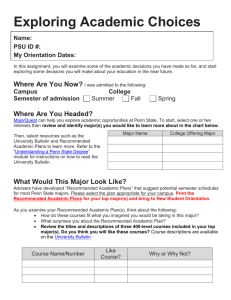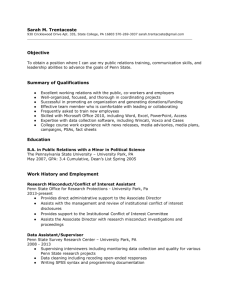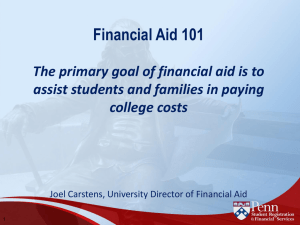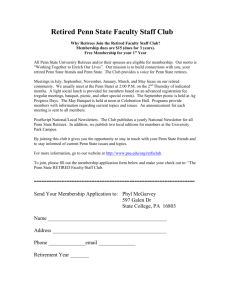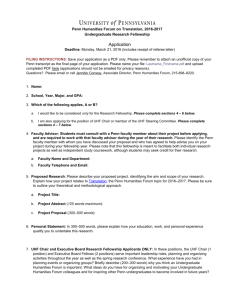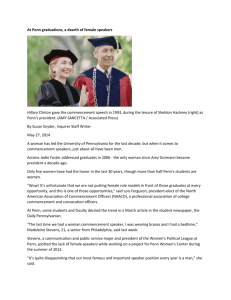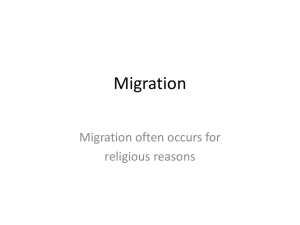power-point presentation
advertisement
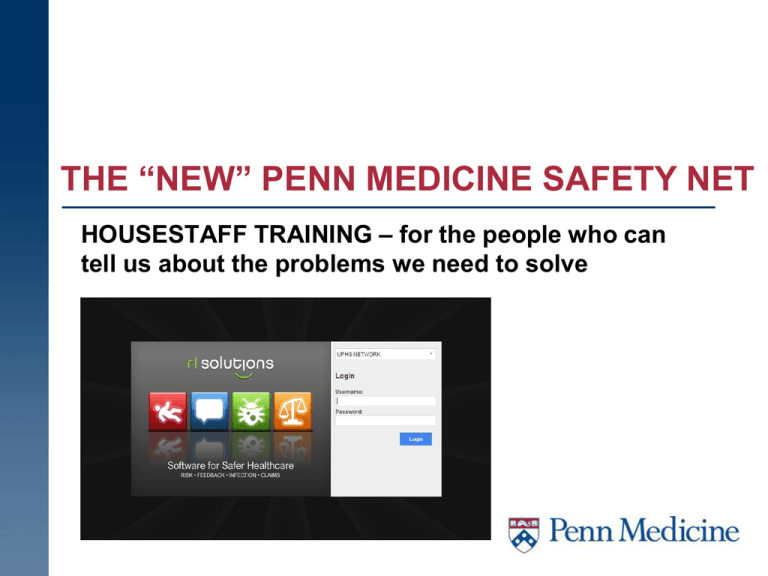
THE “NEW” PENN MEDICINE SAFETY NET HOUSESTAFF TRAINING – for the people who can tell us about the problems we need to solve What is the Penn Medicine Safety Net? A software program that allows everyone at Penn Medicine to report problems that arise during patient care. What’s “new” about it? Updated interface Shorter forms More ways to get feedback Easier to access (desktop icon) 2 Wait a minute…. EVERYONE at Penn Medicine? You want ME to report stuff? Yes – EVERYONE. Residents, nurses, advanced practitioners, faculty, pharmacists, transporters, housekeepers, EVERYONE. 3 1,420: Number of times housestaff saw something and said something last year. Did you? Penn Medicine Safety Net Safety Net Helps Find and Fix the Holes in our System! 5 What do I report? Do I report this guy? I don’t want to “rat him out”…. Report any problems with patient care… things that could harm or did harm a patient. It isn’t about “reporting people.” Some examples? There was an important addendum to a CT scan, but the primary team never received a phone call There was a complication during a procedure. We almost marked the wrong leg for surgery, but we caught it in time and prevented harm. A patient received a dose of insulin intended for her roommate, but fortunately no harm occurred. 6 So how do I report something? Click the Safety Net button on the Penn Intranet or the new desktop icon Penn Safety Net Choose to log in as yourself using your regular email log-on or anonymously. It is fine to report anonymously – just know that you will not be able to receive follow-ups 7 Safety Net has Different “Event Types” Complications of Tests / Treatments / Procedures Medication Errors Errors related to Tests / Treatments / Procedures Other / Miscellaneous Employee / Affiliate / Visitor Safety Professionalism Problems Equipment / Supplies / Device Problems Skin Integrity Problems Falls Transfusion Problems Healthcare IT Problems If you are not sure…choose “Other” These 2 are commonly confused…..see next slide 8 Select the form you think is best You can type in a word to search for the best choice if you aren’t sure which form to pick for your report. 9 Wait a minute…. What’s the difference between Errors related to Tests / Treatments / Procedures and Complications of Tests / Treatments / Procedures? Did something happen (or nearly happen) because we made a mistake? Call it an “Error”. • The wrong medication was ordered or someone forgot to hand-off an important clinical detail Did something happen that we didn’t necessarily cause, but we didn’t want it to happen? Call it a “Complication”. • A patient aspirated and was transferred to ICU or had an MI in the OR. 10 Where Do All These Names & Categories Come From? The naming system is the same one used by the Pennsylvania Patient Safety Authority. It makes our data more reliable. We use it for benchmarking our safety performance against other hospitals in the state 11 Wow…I can’t believe he just said that to me… Professionalism Problems • Should be reported. • Your name as the reporter will always remain anonymous. You also have the option of not attaching your name to the report at all. • We all have bad days, but unprofessional behavior to colleagues does not make for a healthy or safe work environment. • All safety net professionalism reports entered by housestaff will be reviewed by GME leadership and follow-up will occur. 12 Examples of Professionalism Events to Report You call in a consult and the fellow from the consultant service yells at you or refuses to accept the consultation request. An attending intimidates or berates you in private or in front of other colleagues. A nurse refuses to carry out an order that you place and is unwilling to have the matter mediated by a supervisor or another party. 13 Describe the Event Factually, Don’t Editorialize or State Opinions Tell us what happened. JUST THE FACTS. KEEP IT SHORT. Don’t blame people or say what you think should or shouldn’t have happened. You will get a call if more information is needed. Choose the Harm Score that best matches your report. The definitions are right on the form. 14 What is a “Harm Score”?...Sounds Scary! “Harm Scores” allow us to categorize each event and track our safety performance over time. We understand that these are new terms and sometimes you might not be sure which category to choose….. If you aren’t sure, don’t agonize over it…just give it your best guess! If the reviewer of the event wishes to change the score, they can. 15 Now, tell us who YOU are & your department Listing your role and department helps us provide you and your residency program leaders with feedback 16 Now tell us who was affected…. Did the event affect an inpatient, an outpatient or an employee? If a patient was affected, the rest of the info will auto populate by entering the medical record number. 17 And finally, tell us where it happened: This is really important! The department, service, and location you choose determines who receives your report. Who “owns” the problem? Who should work on solving the problem? Where did most of the problem happen or begin? For example, let’s say you want to report a problem with a newly admitted patient. The emergency room sent the patient upstairs with the wrong medication hanging on the IV pole. The problem happened in the Emergency Room, but was discovered on the floor. The nurse manager in the Emergency Room (not on the floor) needs to look into this error…. So choose the Emergency Medicine as the Service and Department and the Emergency Room as the location. (But don’t worry if you choose incorrectly – the nurse manager on the floor will know to send it to the Emergency Room if you pick the wrong location) 18 (If you get interrupted, you can save it as incomplete by clicking on More Actions. Just remember to come back later to finish the report.) That’s it? I’m done? Wow - that was easy! When your form is complete, click SUBMIT and you are done! 19 Before I hit submit…I wonder who reads these? A bunch of people! 1 - Risk Manager – a nurse with expert training in healthcare risks and patient safety 2 - Manager on the Floor/Area Where the Event Occurred – they oversee all events that occur on their unit 3 – Quality & Safety Project Manager – individual who works with the hospital to improve quality & safety 4 – Physician leaders for quality & safety in the hospital and in your department 20 WAITAAMINUTE. MINUTE! WAIT What How happened do I find out to what happens to my report? I want my report? I want something done something about done it! about it. There are 4 ways you can find out what happened to your report: 1) When you hit SUBMIT you will get an email with the name and phone number of a person you can contact with follow-up questions or concerns. 2) You can see who is managing your report in your InfoCenter list. 3) When your report is closed, you will get another email with the name and phone number of a contact person. 4) Your residency program leadership will begin to receive regular reports on events that happened in your area or were reported by you or your colleagues– ask them to share the information with you if they don’t already do so. 21 And that’s Safety Net! We know you are busy saving lives… we appreciate you taking the time to learn to use the Penn Medicine Safety Net. Healthcare is so complex… we all have to take the time to report problems so we can improve and make our work easier, more satisfying, and safer for patients. Thank you! 22 Penn Medicine Safety Net 23

